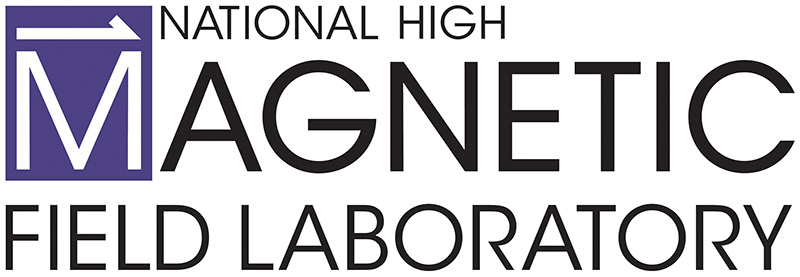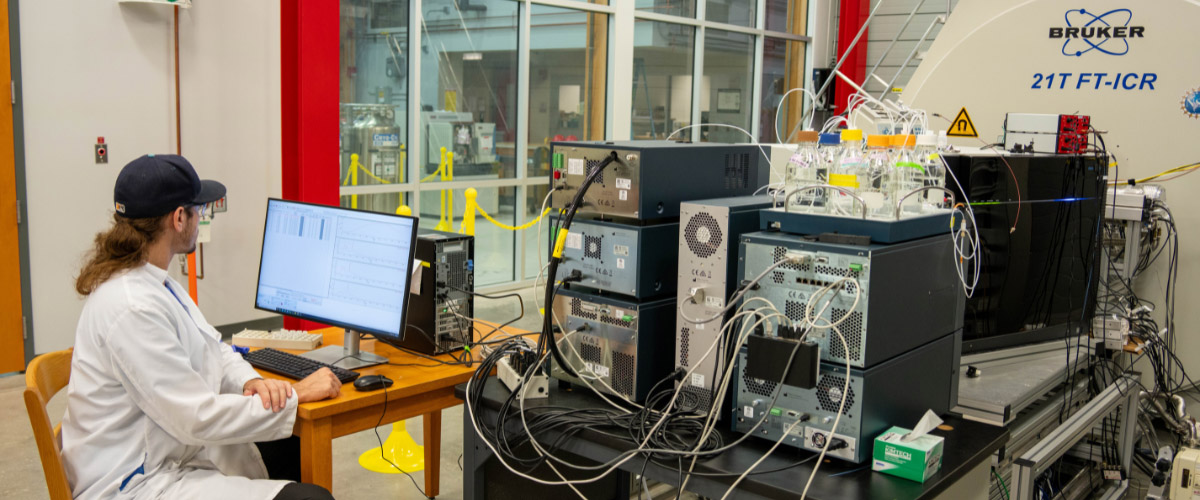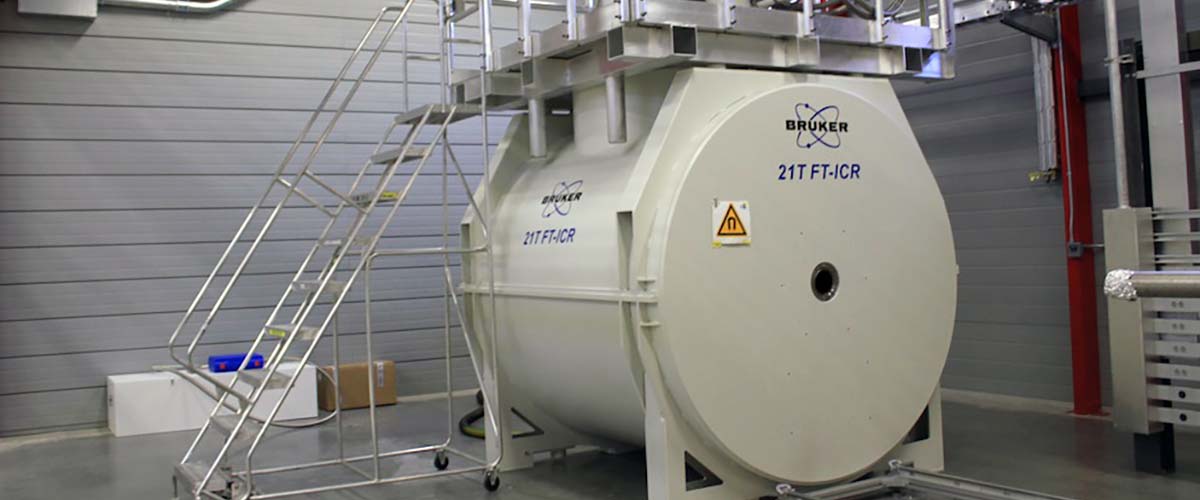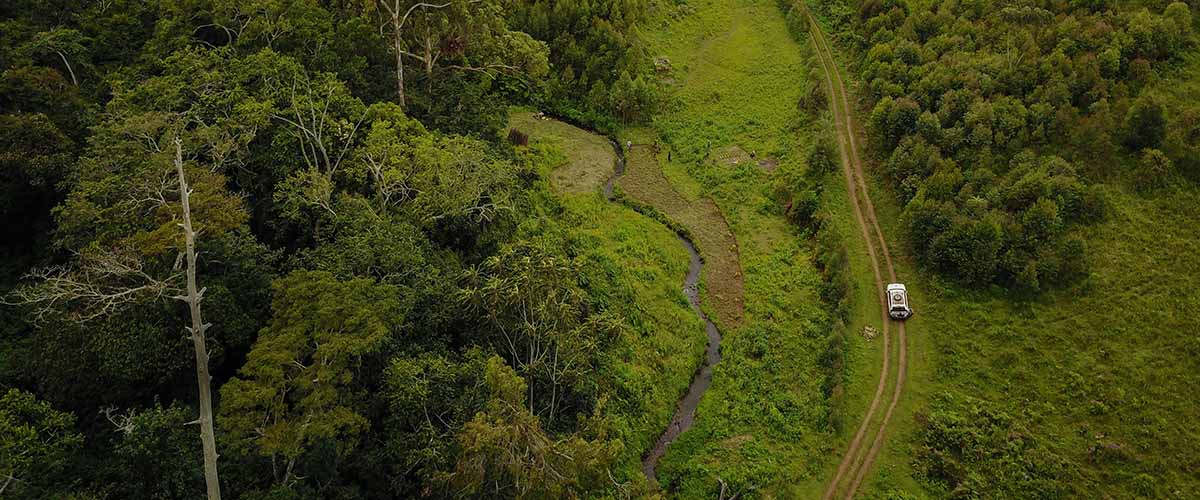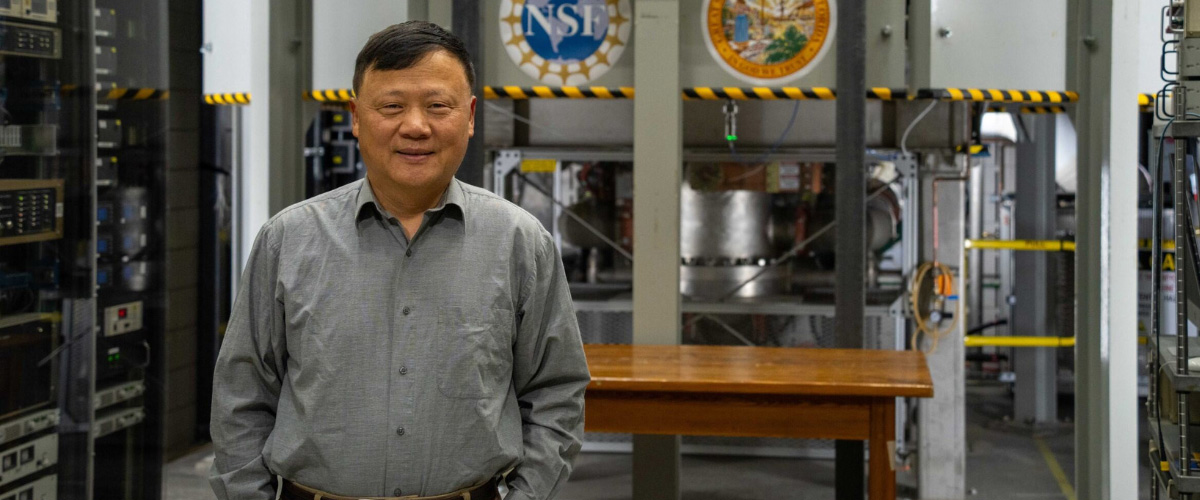Contact: David Butcher
TALLAHASSEE, Fla. — Big magnets produce big data, which can produce big challenges and big opportunities.
The National MagLab is collaborating with computer scientists at Florida State University to maximize usage of mountains of data collected using the world’s most powerful magnets.
For 18 months, the MagLab’s Ion Cyclotron Resonance (ICR) facility has been working with programmers from FSU’s Computer Science Department to improve data processing, organization, search capabilities, analysis, and visualization.
The MagLab’s ICR facility uses the world’s most powerful mass spectrometers to analyze the molecules in complex mixtures, investigating everything from proteins in our bodies to forever chemicals in our environment. Recent upgrades to instruments and data acquisition methods have increased data generation by a thousand-fold, turning what was once a steady stream of information into a flood.
“We are a victim of our own success. We’ve buried ourselves in data,” said ICR analytical chemist Ryan Rodgers. “We had to get a lot smarter about how we handle it.”
That’s where the FSU Computer Science Department’s team stepped in under the leadership of Professor Gary Tyson. He and his colleagues, along with a group of graduate students, took a fresh look and developed new algorithms to optimize data analysis.
“The capabilities of their systems were not captured by the existing analysis software. So, we thought we could improve the fidelity of the analysis that's performed,” Tyson explained.
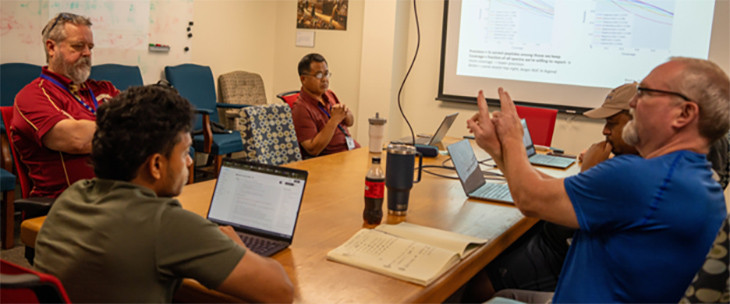
Scientists from the MagLab’s ICR facility confer with faculty and students in with FSU’s Computer Science Department during a meeting on their data optimization collaboration.
For MagLab analytical chemist David Butcher, these improvements hold the promise of helping sort through the more than a million unique proteins he studies that power the biochemical processes in our bodies.
“Using our instruments, a single protein can be broken up into hundreds or thousands of unique pieces, like shattering a jigsaw puzzle. Then you wind up doing that for thousands of proteins in a single sample, and now you've got thousands of shattered jigsaw puzzles. Reassembling them is a really complicated data analysis problem which we think we can make some significant progress on,” Butcher said.
The FSU team is also tapping into the ICR lab’s vast body of knowledge from decades of previous discoveries to search old data in new, more sophisticated ways.
“We have data sets going back 20 years,” Tyson said, “Those can be mined for additional research. Now it doesn't take tremendous amounts of manpower to do that. You could do comparative analysis of samples. You can study old samples for areas that they weren't mined before.”
The computer scientists are also developing an artificial intelligence (AI) system to help MagLab users from around the world sort, analyze, and process new and old data on their own.
“A user would come to the facility, run their sample, and then be able to just have a chat, make a query, or a set of queries with a chat bot… then the chat bot would actually run the analysis for what the person is looking for, and generate the figures that they might want to use for their publication,” Tyson explained.
This modern approach to massive data sets can unlock exciting new discoveries that were never even imagined, changing the way the users work with their data and “dramatically improving their ability to be explorers.”
Rodgers says the improvements will also help researchers take a broader approach, capturing and categorizing 100% of their sample’s data rather than focusing on specific targets.
“When you go in and you have targets, it tends to put blinders on even the best scientist and it's almost like you find only what you're looking for and not what's actually there,” Rodgers said. “The underlying statistical analysis that’s been enabled by the computer science department has just been an absolute game changer.”
This game changer will support more groundbreaking work from ICR researchers, whether it’s developing cleaner-burning fuels, investigating how wildfires impact ecosystems, or gaining deeper insight into the human proteome.
“We’re just scratching the surface. There's really a huge amount of information out there, a huge amount of discoveries still to be made in this area,” Butcher says. “And having these algorithms and this AI helping scientists sort through all the data will be a massive help.”
